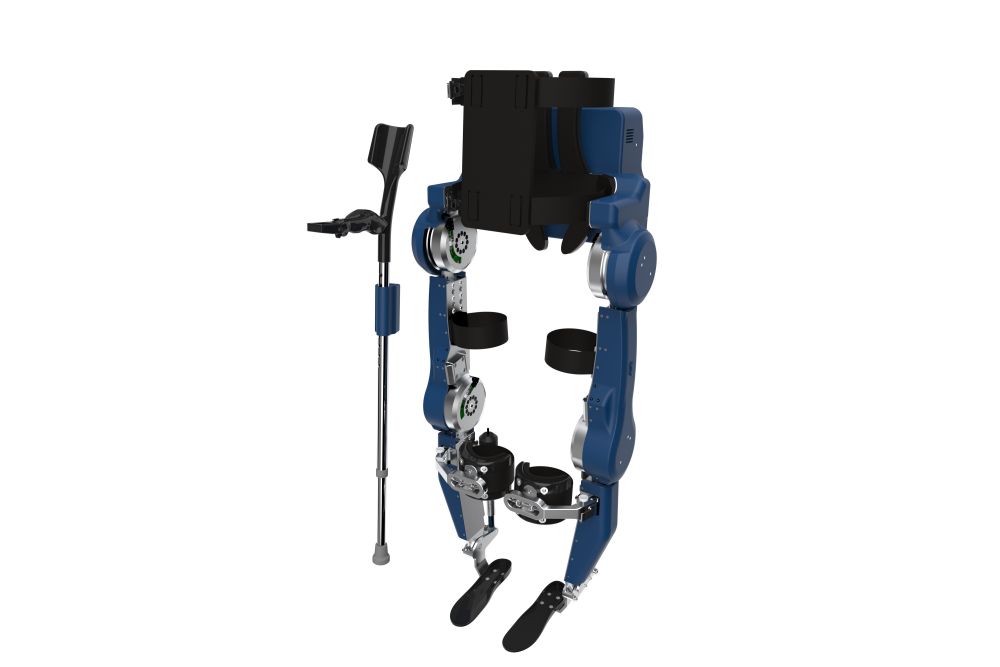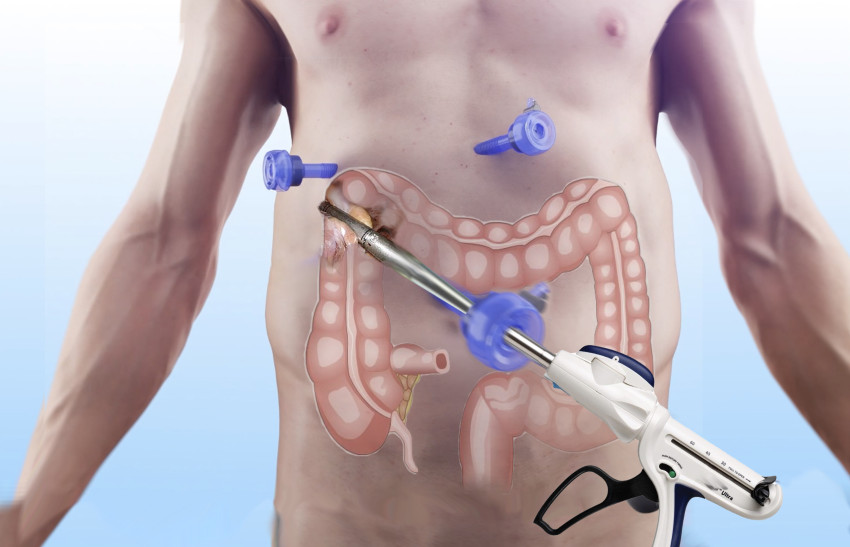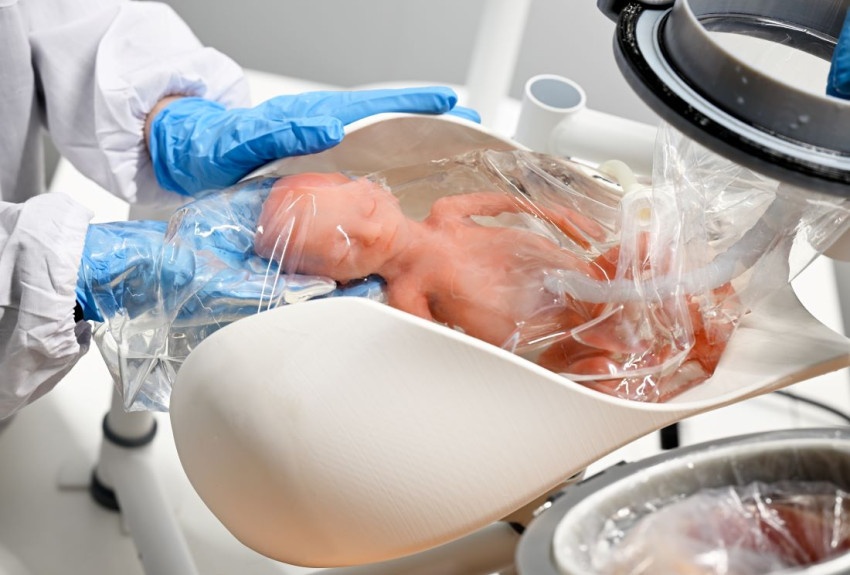
Team of students improves exoskeleton
The team of students known as MARCH, from Delft University of Technology, presented an improved version of their exoskeleton last week. Such an exoskeleton enables paraplegics to walk again. One of the new additions is an ankle joint.
The MARCH project is designed to help people with paraplegia, who are paralysed from the waist down, to walk again. The exoskeleton is fastened to the waist and the legs, enables the person to get up out of their wheelchair and then provides the walking motion. The person supports themselves using crutches. These crutches contain the controls, so the person can choose between standing up, walking, stopping, sitting down again, etc.

Ankle joint
The new design includes a number of new features. Unusually for an exoskeleton, there is now an ankle joint to accommodate the up and down motion of the foot. ‘This allows the person to roll their foot from heel to toe, giving them a much more pleasant walking motion,’ explains Magali Ponds of the team of students. The foot movement happens automatically, without the user having to press a button to operate this function of the exoskeleton.
Variable step size
Another new function is that the step size can be adjusted to the user, allowing them to select the pace that suits them best. To make it easier to fasten the exoskeleton, the securing point on the shin is now removable.
There is also greater focus on points at which the exoskeleton supports the body. ‘This is to prevent sores. We wanted particularly to relieve the area around the coccyx.’
The motors of the joints for the hips and the knees have been redesigned. ‘We have optimised these for greater power and speed, which helps to make the walking motion feel more natural.’ The operating system electronics and the software were also upgraded.
Competition
Now that the design is ready, production of the parts will start. Then comes the assembly. ‘We expect the exoskeleton to be ready for use in May.’
The MARCH III project is part of the annual international competition that is once again expected to take place this autumn. Last year, the team from Delft came second. Because the intention is that the skeleton will take on all sorts of obstacles, it also has functions such as ‘climbing stairs’ and ‘walking on an uneven surface’.
This year, Sjaan Quirijns will be the one operating the exoskeleton during the competition. She has been a paraplegic since 2000. Ponds: ‘Once we have tested the skeleton for reliability and ease of use, Sjaan will begin training with it in the summer. We will then fine-tune the skeleton using the software to discover what she feels comfortable with.’
The competition is planned for the autumn. ‘We're not yet 100% certain that it will go ahead, or where the venue will be.’
If you found this article interesting, subscribe for free to our weekly newsletter!
Opening image: MARCH III presentation.






